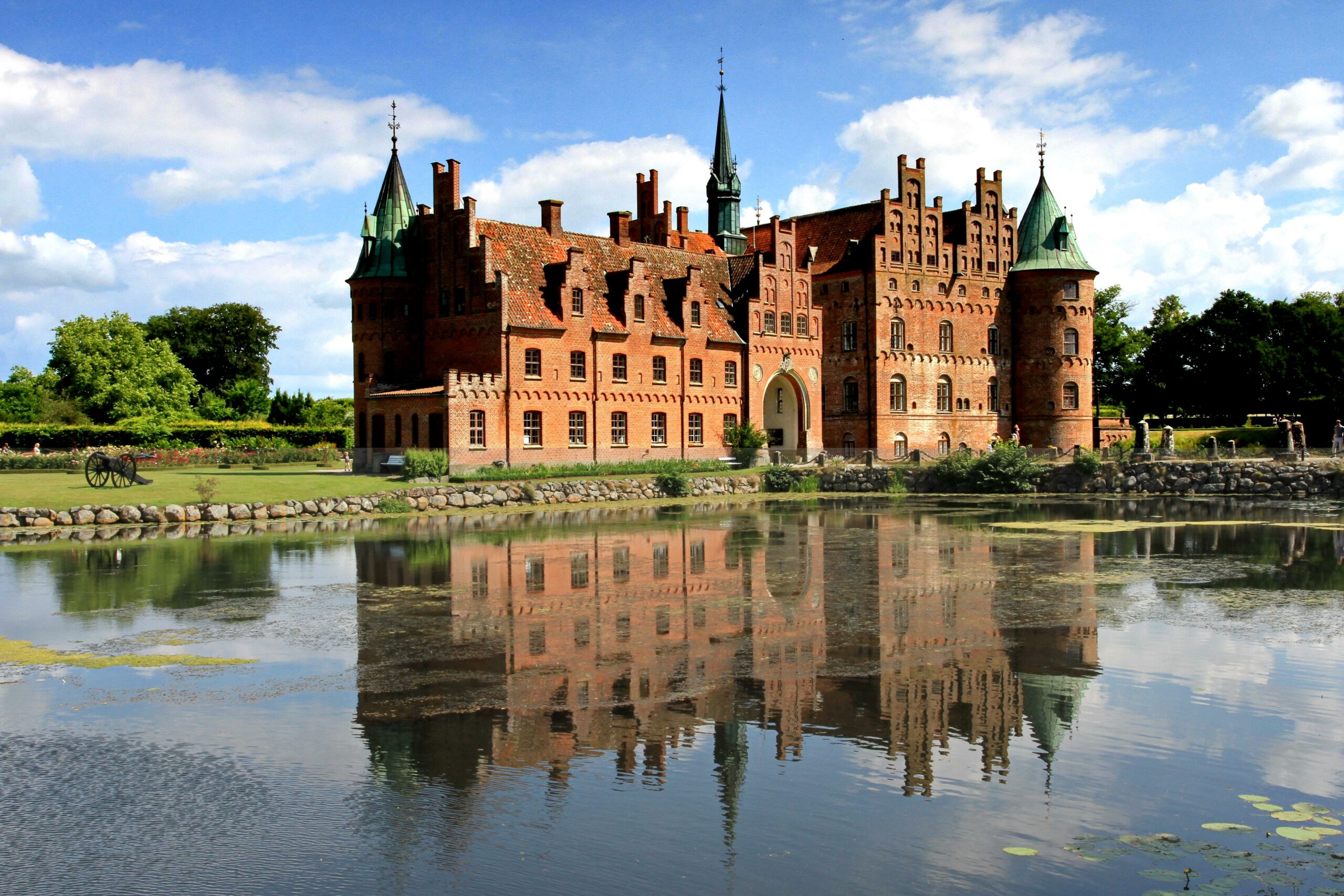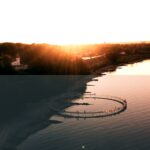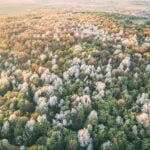Anticipate a spine-chilling expedition as I reveal the eerie mysteries concealed within Denmark’s picturesque landscapes. This engrossing article will explore the realm of the macabre in great detail, revealing the horrifying realities that are frequently overlooked. Anticipate a captivating investigation into the shadowy aspects of Denmark, wherein I divulge unsettling anecdotes pertaining to haunted fortresses, spectral beings, and enigmatic mythology that will evoke chills down your spine. Anticipate a captivating and horrifying experience as we reveal the uncanny mysteries of Denmark, a nation steeped in ominous legends and troubling history.
Scary Facts About Denmark
The serene and picturesque nation of Denmark conceals sinister mysteries that will induce shivers down your spine. Beyond its aesthetically pleasing exterior lies a realm teeming with unsettling anecdotes and ominous legends that are often overlooked. Join me on a disconcerting investigation into the more sinister facets of Denmark as we unveil its unsettling mysteries.
Residences Pertaining to Phantom Appearances and Hauntings
The uncanny allure of Denmark’s fortresses, which function as silent testaments to centuries of history, enchants the country. One such fortress is the infamous Rosenborg Castle, which is located in Copenhagen. As per conjecture, the apparition of King Christian IV persists within the premises, perpetually entangled in the realm of the living. Nonetheless, the castle of Rosenborg is not the only foreboding edifice situated in Denmark. As one advances, they will come across Dragsholm Castle and Voergaard Castle, renowned for being the abodes of ethereal entities. The ancient fortifications captivate and enthrall visitors with their preponderance of supernatural phenomena and spectral manifestations.
“Behind the grandeur of Denmark’s castles lies a chilling presence, spirits that refuse to rest in peace.”
Legends and mysterious supernatural beings
The illustrious folklore of Denmark is a complex tapestry of superstitious tales and cautionary anecdotes. The legend surrounding the Nøkken, a malevolent water entity, resonates across the nation. As it is said that the Nøkken lures unsuspecting individuals into the depths of lakes and rivers, it represents the perilous nature of the Danish waterways. Additionally, individuals who cross the Draugr’s path are beset by its wrath. The nocturnal darkness is inhabited by this terrifying entity. These ominous legends function as a profound reminder that forces exist beneath the surface of reality.
“Denmark’s folklore holds the secrets of ancient creatures lurking in the shadows, waiting to claim their next victim.”
Theme Parks in Ruins and Forgotten Horrors
As the sun sets amidst the urban environment of Denmark, rumors circulate regarding deserted amusement parks. One such location comprises the foreboding remnants of a defunct amusement park, where dilapidated structures and corroded attractions serve as emblematic representations of former ambitions. A foreboding gloom and remnants of revelry serve as a poignant reminder that even the most exuberant settings have the potential to deteriorate into terrifying nightmares.
“Once filled with laughter and joy, these abandoned amusement parks now serve as creepy reminders of lost innocence and forgotten dreams.”
Exposing the Negative Aspect of Denmark
Denmark’s uncanny enigmas extend beyond its notorious haunted castles and supernatural legends. In addition to its visually appealing exterior, this country is captivated by extravagance and the macabre. The unsettling appeal of Denmark arises from its fixation on deserted amusement parks and the menacing beings that skulk within its folklore; it encourages the daring to explore the obscured shadows that adorn its landscape. Hence, are you prepared to explore the realm of awe-inspiring marvels and unveil the authentic essence of Denmark?
“Denmark, a land of scenic beauty and eerie tales, invites the brave to relinquish the comfort of light and reveal its hidden abyss.”
Denmark is a captivating country that is widely recognized for its rich historical heritage, awe-inspiring natural landscapes, and vibrant cultural environment. Individuals who possess an interest in intriguing Denmark-related information are cordially invited to read our article dedicated to the topic. The intriguing origins of Lego and the royal family’s fondness for cycling are just two of the staWhynd entertaining facts contained in this collection. Why delay, then? By clicking here, you can embark on an exhilarating voyage of discovery through the concealed mysteries of Denmark. Enjoy your exploration!
Denmark is a wealth of intriguing and unexpected information. Several peculiar and unanticipated facets of Denmark that are certain to astound you will be examined in this article. Everything is unique to Denmark, including its extensive war history, distinctive naming conventions, and complex language. As a result, allow us to explore the following seven peculiar facts about Denmark that will undoubtedly transform your perspective of the country.
Danish Legislation Pertaining to Naming:
In the context of names, Denmark enforces its own set of regulations. One of the first things that became apparent to us upon our arrival in Denmark was the prevalence of given names. Names such as Casper and Jasper seemed to be pervasive. It is worth mentioning that Denmark has enthat a name law that delineates the process by which names are granted. In contrast to other countries that permit celebrities to give names to their children after peculiar fruits or objects, Denmark upholds a registry of sanctioned names. A selection is possible from a list comprising 21,000 boy names, 25,000 girl names, and roughly 1,500 neutral names. Additionally, an unrestricted quantity of first names is acceptable, given that they do not introduce excessive intricacy for the child. Furthermore, if no name is provided for a child within a six-month period, the infant shall be given the mother’s surname.
Denmark and Sweden: Unanticipated Chronologies of War
Despite the fact that Denmark and Sweden may appear to be peaceful and tranquil countries at the moment, their histories tell an entirely different story. Compared to all other pairs of countries on earth, these two Scandinavian countries have been involved in the greatest number of conflicts. This may appear unexpected considering their current standing. An animosity has existed between Denmark and Sweden since the times when they engaged in constant hostilities and excavated canals using Swedish prisoners of war. While nations may have atoned for their violent pasts, their capacity to evolve and change over time is an enthralling phenomenon to witness.
Aspects of Danish Week Numbers and Curves:
A period of adjustment to the Danish system of weeks may be necessary upon initial arrival. In Denmark, specific weeks are commonly denoted as “weeks” instead of precise dates. An example of this would be “Let’s meet up again in week 12,” which could be stated by someone. Individuals who are accustomed to scheduling according to specific dates may find this information somewhat puzzling. While weekly numbers do provide some benefits, particularly for parents, there are others. The practice of allocating specific week numbers during school holidays and other significant occasions aids parents in organizing their children’s vacations and activities. You need not worry, as there is a website dedicated to providing the current week number in the event that you are ever uncertain of the week in question.
The Danish Language Faces Difficulties:
Recent research has shown that acquiring proficiency in Danish can be a formidable undertaking. According to research, even for young children, acquiring Danish can be difficult. Danish children, when compared to their Norwegian peers of equivalent age, possess a relatively restricted lexicon and frequently struggle with understanding the past tense. In light of the fact that the Danish language comprises over 40 consonants, which is more than double the number found in English, Norwegian, and Swedish, it is not unexpected that mastering it requires a substantial investment of time and effort.
The fallacious Danish pastry credo:
The standard conception of Danish pastries consists of confections that are both sugary and flaky and that are available in bakeries worldwide. However, it is important to note that within Denmark, the term “Venebles” or “Vienna bread” accurately describes pastries that are more commonly known as Danish pastries in the United States. This incredible revelation originates from a baker’s strike that transpired in the mid-1800s. In order to maintain the bakeries, Austrian labor was imported, and Austrian bakers supplied Denmark with their own confectionary delicacies. Hence, the present-day Danish confection can be traced back to Austria.
An Unusual Investigation into Danish Nouns:
The conventions and regulations governing Danish names are unique. Middle names, for example, often manifest as surnames, such as the maiden name of the mother or the surname of a grandparent. There is no limitation on the quantity of middle names that may be used. On the contrary, last names exhibit a unique array of intricacies. While each person is restricted to using a single last name, in situations where the intended last name is shared by more than 2,000 individuals in Denmark, a catalog of complimentary surnames is available for reference. In addition, the website of the Danish government provides information regarding the number of Danish citizens with whom an individual shares a particular name.
As a conclusion,
One cannot help but be mesmerized by the extraordinary customs and shocking realities that characterize Denmark. A history of conflict and restrictions on nomenclature proliferate in the intriguing peculiarities that comprise Danish culture. Although challenging, studying Danish provides the chance to immerse oneself entirely in the country’s extensive linguistic heritage. Moreover, it is crucial to acknowledge that Danish pastries trace their origins back to an Austrian influence. Therefore, should you ever have the opportunity to visit Denmark, be ready to be mesmerized and enthralled by the myriad marvels that it exhibits.
FAQ
Preliminary Question
In Denmark, what are some eerie locales and haunted castles?
Prompt Initial Reaction
Denmark is home to a multitude of suspicious sites and haunted fortifications. Two notable locations are Voergaard Castle and Dragsholm Castle, which is an abandoned amusement park. These sites have gained notoriety for their unsettling atmosphere and distressing anecdotes.
The second inquiry
What is the name of the eerie Copenhagen mansion?
Response Two
Rosenborg Castle refers to the fortress that looms menacingly over Copenhagen. The location’s renowned status as a haunted site has attracted individuals who are captivated by supernatural phenomena.
The Third Inquiry
Several of the following inventions originated in Denmark:
Three Responses
Denmark is internationally recognized for its significant contributions to innovation. Bluetooth, Google Maps, Silicon Insulin, and LEGO are all notable inventions. The impact of these Danish innovations has been significant across various industries.
The fourth inquiry
What is the sales tax rate in Denmark?
Answer No. Four
A 25% sales tax rate is in effect in Denmark. This is relatively high when compared to other countries and contributes to the funding of public services and welfare programs in Denmark.
Five Cinquisite
Is it safe to leave infants in carriages outside of shops and cafes in Denmark?
The Fifth Answer
In fact, parents in Denmark commonly opt to leave their children in carriages as they enter establishments such as stores or cafés. As a result of the Danish societal emphasis on the safety and well-being of infants, this activity is generally regarded as risk-free.
- Unveiling the Enigma: Mansoureh Khojasteh Bagherzadeh’s Public Appearances & Private Life in Iran - July 18, 2025
- Unveiling the Mystery: Mansoureh Khojasteh Bagherzadeh’s Husband: A Rare Glimpse into a Private Life - July 18, 2025
- Unveiling Masoud Khamenei’s Mother: Power, Influence, and Iran’s Future - July 18, 2025
















